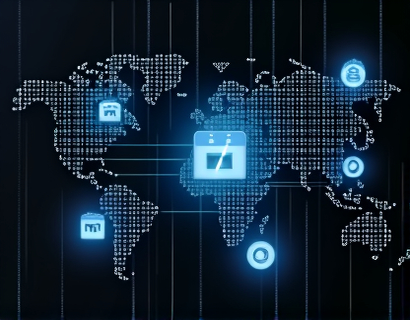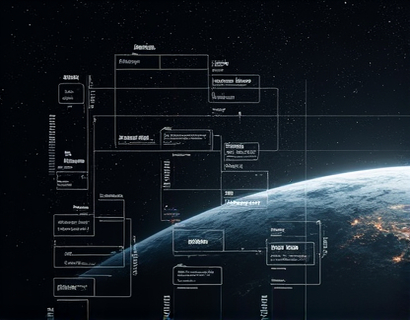Agricultural Software: Transforming Farming with Innovative Tech for Enhanced Efficiency and Productivity
In recent years, the agricultural sector has witnessed a significant transformation driven by advanced software solutions. These technologies are revolutionizing the way farming operations are managed, leading to enhanced efficiency and productivity. The integration of innovative tech in agriculture is not just a trend but a necessity, as the global population continues to grow, demanding higher food production with fewer resources. This article delves into the various ways agricultural software is reshaping the industry, focusing on streamlined processes, improved data management, and informed decision-making.
Streamlined Processes
The first and most immediate impact of agricultural software is the streamlining of farm operations. Traditional farming methods often involve manual tasks that are time-consuming and prone to errors. With the advent of software solutions, many of these tasks can be automated or significantly simplified. For instance, precision agriculture tools use GPS and sensor technology to optimize field-level management regarding crop farming. This includes variable rate application of seeds, fertilizers, and pesticides, ensuring that resources are used efficiently and effectively.
Another area where software has made a substantial difference is in the management of farm equipment. Fleet management software allows farmers to monitor the location, status, and maintenance needs of their machinery in real-time. This not only reduces downtime but also extends the lifespan of equipment through timely maintenance. Additionally, software can schedule maintenance automatically, ensuring that equipment is always in optimal condition when needed.
Improved Data Management
Data is the backbone of modern agriculture, and effective data management is crucial for making informed decisions. Agricultural software provides robust platforms for collecting, storing, and analyzing vast amounts of data. This data can include weather patterns, soil conditions, crop health, and market trends. By centralizing this information, farmers and agricultural professionals can access it easily and use it to make data-driven decisions.
One of the key benefits of improved data management is the ability to track and analyze crop performance over time. This historical data can help identify patterns and trends, allowing for better planning and resource allocation. For example, by analyzing past weather data and crop yields, farmers can predict future conditions and adjust their planting schedules accordingly. This proactive approach can significantly reduce risks and increase overall productivity.
Informed Decision-Making
With access to comprehensive and accurate data, agricultural software empowers farmers and professionals to make informed decisions. Decision support systems (DSS) are a critical component of this, providing recommendations based on real-time data and historical insights. These systems can suggest optimal planting times, ideal crop rotations, and the most effective pest management strategies. By leveraging such tools, farmers can optimize their operations and maximize yields.
Another area where informed decision-making is crucial is in financial planning and risk management. Agricultural software can integrate financial data with operational data, offering a holistic view of the farm's performance. This integration helps in budgeting, cost control, and financial forecasting. For instance, by analyzing market trends and crop prices, farmers can make better decisions about when to sell their produce, ensuring they get the best possible price.
Enhanced Crop Monitoring and Management
Crop monitoring is a critical aspect of modern farming, and agricultural software has greatly enhanced this process. Drones equipped with cameras and sensors can capture high-resolution images of fields, providing detailed insights into crop health. These images can be analyzed using machine learning algorithms to detect issues such as nutrient deficiencies, pest infestations, and water stress. Early detection of these problems allows for timely intervention, preventing significant losses.
Additionally, software can manage irrigation systems more efficiently. Smart irrigation solutions use soil moisture sensors and weather data to determine the exact amount of water needed for each part of the field. This precision irrigation not only conserves water but also ensures that crops receive the optimal amount of moisture, leading to healthier plants and higher yields.
Supply Chain Optimization
The agricultural supply chain is complex and often fraught with inefficiencies. Software solutions are addressing these challenges by providing end-to-end visibility and management of the supply chain. From farm to table, these systems can track the movement of goods, monitor inventory levels, and optimize logistics. This transparency helps in reducing waste, lowering costs, and improving delivery times.
For example, blockchain technology, when integrated with agricultural software, can ensure the traceability of products. This not only builds trust with consumers but also helps in quickly identifying and addressing any issues in the supply chain. By having a clear and immutable record of each step, farmers and distributors can ensure that products meet quality and safety standards.
Sustainability and Environmental Impact
The environmental impact of agriculture is a growing concern, and software solutions are playing a vital role in promoting sustainable practices. By optimizing resource use, such as water and fertilizers, agricultural software helps reduce the ecological footprint of farming operations. Precision agriculture techniques minimize the overuse of chemicals, which can contaminate soil and water sources.
Moreover, software can assist in carbon footprint management by providing tools to monitor and reduce greenhouse gas emissions. For instance, by optimizing tractor routes and reducing idle time, farmers can lower fuel consumption and emissions. This not only benefits the environment but also helps farmers comply with increasingly stringent environmental regulations.
Challenges and Considerations
While the benefits of agricultural software are clear, there are several challenges that need to be addressed. One of the primary concerns is the cost of implementation and maintenance. Advanced software solutions can be expensive, and not all farmers, especially smallholders, may have the financial resources to adopt these technologies. To bridge this gap, there is a growing need for affordable and scalable solutions that can be accessed by a broader range of farmers.
Another challenge is the digital divide. Many rural areas lack the necessary infrastructure, such as reliable internet connectivity, which is essential for the effective use of agricultural software. Governments and private organizations must invest in improving digital infrastructure to ensure that all farmers can benefit from these innovations.
Future Trends and Innovations
The future of agricultural software is promising, with several emerging trends set to further transform the industry. One such trend is the integration of artificial intelligence (AI) and machine learning. AI can analyze vast amounts of data to provide more accurate predictions and recommendations. For example, AI-powered systems can predict crop yields with higher precision, helping farmers make better decisions about harvests and sales.
Another exciting development is the use of Internet of Things (IoT) devices in agriculture. IoT sensors can monitor a wide range of parameters, from soil moisture and temperature to livestock health. These devices can communicate with each other and central systems, providing real-time data that can be used to optimize farm operations. The interconnectedness of these devices creates a smart farm ecosystem that is more efficient and responsive.
Lastly, the rise of vertical farming and urban agriculture is another area where software plays a crucial role. In urban settings, space is limited, and traditional farming methods are not feasible. Software solutions for vertical farms help manage the complex systems required for growing crops in controlled environments, ensuring optimal conditions for plant growth and high yields.
Conclusion
The integration of advanced software solutions in agriculture is undeniably transforming the sector. By streamlining processes, improving data management, and enabling informed decision-making, these technologies are enhancing efficiency and productivity. As the global demand for food continues to rise, the role of agricultural software will become even more critical. Embracing these innovations is not just an option but a necessity for farmers and agricultural professionals aiming to thrive in a competitive and sustainable market.










































